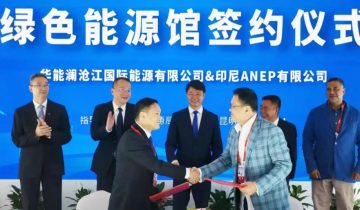Nickel is rapidly gaining recognition as one of the most promising investment opportunities in the commodities market. Driven by its critical role in the green energy transition, the long-term growth potential of nickel remains significant, especially as global industries move toward decarbonization. For PT. Anugrah Neo Energy Materials (ANEM), a company deeply embedded in the nickel and renewable energy value chain, understanding the dynamics of this market is crucial for shaping future strategies.
Nickel is a vital component in the production of lithium-ion batteries, particularly for electric vehicles (EVs). As EV adoption accelerates globally, demand for nickel is expected to outpace supply, creating substantial opportunities for investors. High-nickel battery chemistries, such as NMC (Nickel-Manganese-Cobalt) and NCA (Nickel-Cobalt-Aluminum), are favored for their superior energy density, enabling longer driving ranges. According to BloombergNEF, EV sales are projected to rise to over 40% of new vehicle sales globally by 2030, further increasing nickel demand.
The renewable energy sector also drives demand for nickel. Energy storage systems that stabilize power grids, especially those reliant on intermittent sources like wind and solar, rely heavily on nickel-rich batteries. As nations invest in energy storage to support their renewable energy goals, the need for nickel continues to grow. Indonesia, the world’s largest nickel producer, is strategically positioned to meet this demand. Companies like ANEM play a crucial role by producing materials such as Mixed Hydroxide Precipitate (MHP) and nickel sulfate, key components in battery production.
However, investing in nickel also requires navigating complex challenges. The extraction and processing of nickel can be resource-intensive, and supply constraints may arise due to regulatory and logistical hurdles. Indonesia, while rich in nickel reserves, faces the challenge of scaling up production of battery-grade nickel sustainably. Efforts to align production with global environmental, social, and governance (ESG) standards are essential for long-term success. ANEM’s commitment to ESG principles ensures it remains competitive and aligned with global sustainability trends.
The long-term growth potential of nickel is further underscored by global policy shifts. Governments worldwide are implementing stricter carbon-neutral targets, encouraging industries to adopt cleaner technologies. These initiatives boost demand for EVs and renewable energy solutions, both of which depend heavily on nickel. Additionally, strategic collaborations between mining companies, battery manufacturers, and EV producers are fostering a vertically integrated supply chain, ensuring stability and growth.
For investors, the nickel market represents a blend of high potential returns and evolving risks. Diversification into companies that demonstrate innovation, sustainability, and scalability, like ANEM, can be a prudent strategy. By addressing key challenges and capitalizing on emerging opportunities, the nickel industry is set to play a transformative role in the global transition to a low-carbon economy.
In conclusion, the nickel market presents compelling investment opportunities driven by its critical role in the EV and renewable energy sectors. With careful consideration of market trends and commitment to sustainable practices, nickel holds significant promise for long-term growth. For ANEM, this represents not only an opportunity to lead in the energy materials sector but also to contribute meaningfully to a more sustainable future.
References:
BloombergNEF, International Nickel Study Group, McKinsey & Company, Wood Mackenzie.





